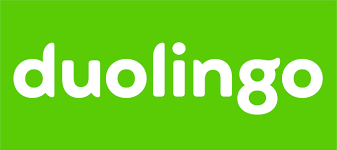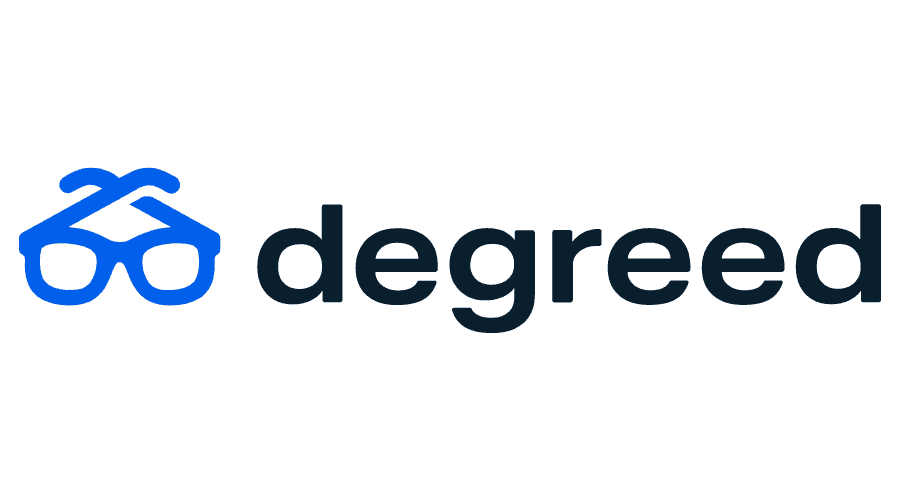Education is evolving faster than ever, with technology at its forefront. In 2025, digital learning platforms have transformed how we teach, learn, and grow. Whether you’re an educator seeking engaging tools, a student exploring new skills, or an institution aiming to scale learning solutions, choosing the right platform is vital. But with countless options, where do you start? Let’s dive into the essentials of digital learning platforms and uncover the top 10 platforms shaping education in 2025.
What are digital learning platforms ?

Digital learning platforms are full online systems or tools that deliver education and streamline the learning experience in a virtual space. They connect learners, educators and institutions and give access to education and scale knowledge sharing.
In short digital learning platforms have moved beyond just information repositories. They now offer full ecosystems for collaboration, engagement and personalized learning paths.
Key features of digital learning platforms
- Access to lots of resources
Digital learning platforms have lots of educational content including: Video lectures to explain concepts visually. Quizzes for self assessment. Interactive tools like simulations, flashcards and gamified learning aids. These platforms often have content from top institutions or allow educators to create their own custom content.
- Flexible learning
One of the biggest advantages of digital platforms is flexibility. Learners can access content anytime, anywhere and at their own pace. Perfect for professionals with work schedules, students in remote locations or lifelong learners fitting education into their busy lives.
- Tracking and analytics
Most platforms have built in analytics to track learning. Educators can see student performance, identify areas for improvement and adjust lessons accordingly. Learners see their strengths, weaknesses and overall progress.
The role of digital learning platforms in 2025
By 2025 these platforms have become essential tools in the education landscape, catering to the changing needs of both traditional and non traditional learners.
Through discussion forums, group projects and peer to peer interaction. Platforms are using cutting edge technologies like AI, VR/AR and adaptive learning algorithms to create immersive and personalized experiences. Also, by breaking down geographical barriers these platforms are making education accessible to millions worldwide, regardless of location.
What to consider when choosing digital learning platforms in 2025

Selecting the right digital learning platform in 2025 can feel overwhelming, given the vast number of options available. To make an informed choice, it’s crucial to assess the platform’s features, usability, and value against your specific needs. Here are the key factors to consider:
Cost
Budget is often the first consideration when choosing a platform. Digital learning platforms offer various pricing models, so it’s essential to:
- Compare pricing structures: Some platforms operate on a subscription model (monthly or annual fees). Others may offer one-time purchases or pay-per-course options.
- Free versions and trials: Look for platforms that offer free trials or basic versions to test their functionality before committing financially.
- Hidden costs: Check for additional charges like premium features, add-ons, or content licenses.
A cost-effective platform doesn’t necessarily mean the cheapest—it should deliver value for the price.
User experience (UX)
A good user experience ensures that learners and educators can navigate the platform effortlessly. Key aspects to evaluate include:
- Ease of use: Is the interface intuitive and easy to navigate? Or does it require minimal training for first-time users?
- Accessibility for all skill levels: The platform should cater to both tech-savvy users and those less familiar with digital tools.
- Customizability: Does it allow users to personalize their dashboards or course layouts to fit specific needs ?
Scalability
Scalability ensures that your platform remains relevant even as your organization or learning needs evolve. As your needs grow, the platform should grow with you. Evaluate scalability by asking:
- Can it handle more users or expanded content? Platforms like Moodle or Blackboard are known for their ability to scale.
- Does it integrate well with other systems? Look for platforms that connect seamlessly with tools like CRM software, HR systems, or other educational technologies.
Content quality
A platform with superior content ensures learners stay engaged and derive maximum value. High-quality content is the backbone of any digital learning platform. Assess :
- Content availability: Does the platform provide pre-built, reputable resources, or does it require educators to create their own?
- Regular updates: Are the materials updated frequently to reflect current trends and industry standards?
- Multimedia support: Can the platform accommodate diverse content types like videos, audio, interactive quizzes, and gamified elements?
Analytics and reporting
In 2025, data-driven decisions are critical for optimizing learning outcomes. Analytics not only help in tracking progress but also guide future improvements in teaching methods and curriculum. The platform you choose should offer:
- Performance tracking: Insights into learner progress, quiz scores, and overall performance.
- Engagement metrics: Tools to measure participation levels and identify drop-off points.
- Custom reports: The ability to generate tailored reports for learners, educators, or administrators.
Accessibility
A platform that prioritizes accessibility ensures that everyone can use it effectively, regardless of device or ability. Key considerations include:
- Mobile compatibility: Does the platform have a responsive design or a dedicated mobile app ? Mobile-friendly platforms like Google Classroom or Duolingo enable learning on the go.
- Compliance with accessibility standards: Features like screen readers, captioned videos, and keyboard navigation support learners with disabilities.
Customer support
Reliable customer support can make or break the user experience. When evaluating support, consider:
- Availability: Does the platform offer 24/7 support? Is there a live chat, email, or phone helpline?
- Community forums: Platforms like Moodle have active user communities where learners and educators can exchange ideas and solve problems.
- Training and resources: Does the platform provide tutorials, user guides, or webinars to help you get started ?
Quick checklist for choosing a digital learning platform
Before finalizing your decision, ask yourself the following:
- Does it fit my budget and offer a trial?
- Is it easy to use and suitable for all users?
- Can it grow with my needs?
- Does it offer high-quality, up-to-date content?
- Can I track progress and generate detailed reports?
- Is it accessible on mobile and compliant with accessibility standards?
- Does it offer reliable customer support?
Our top 10 digital learning platforms in 2025
As digital education continues to evolve in 2025, these platforms stand out as leaders in transforming how people learn and teach. Each has unique features, advantages, and limitations, catering to different needs for educators, learners, and organizations. Here’s a detailed breakdown of the top 10 digital learning platforms:
Moodle

A widely recognized open-source LMS, Moodle provides institutions with the ability to create tailored learning experiences. It’s a favorite among schools, universities, and organizations for its flexibility and scalability.
- Key features:
- Fully customizable dashboards.
- A large library of plugins for interactivity.
- Advanced analytics and tracking tools to monitor progress.
- Advantages:
- Free and open-source, making it budget-friendly.
- Scalable for institutions of any size.
- Constraints:
- Requires technical expertise for setup and ongoing maintenance.
Coursera

Coursera is a globally recognized course marketplace offering partnerships with top universities and organizations like Harvard, Stanford, and Google.
- Key features:
- Thousands of courses on diverse subjects.
- Certifications and full degree programs.
- Peer-graded assignments and real-world projects.
- Advantages:
- High-quality, industry-relevant content.
- Ideal for career-driven learners.
- Constraints:
- Premium content, certifications, and degrees can be costly.
Udemy

Udemy is a popular platform for learners seeking affordable and accessible courses on an array of topics, ranging from programming to personal development.
- Key features:
- Extensive library of affordable courses.
- Lifetime access to purchased courses.
- A user-friendly mobile app for learning on the go.
- Advantages:
- Great for casual learners and budget-conscious users.
- Frequent discounts make courses accessible.
- Constraints:
- Course quality varies as content is created by independent instructors.
Blackboard

Known for its premium learning tools and analytics, Blackboard is a go-to LMS for large institutions and organizations.
- Key features:
- Seamless integration with other enterprise systems.
- Built-in video conferencing for virtual classes.
- Robust assessment tools and detailed analytics.
- Advantages:
- Reliable for large-scale educational environments.
- Exceptional customer support and functionality.
- Constraints:
- High subscription costs may not suit smaller institutions.
Microsoft Teams

A collaborative learning tool designed for real-time communication and group interaction. Microsoft Teams has become a staple for remote and hybrid learning setups.
- Key features:
- Real-time video conferencing and chat.
- Integration with the Microsoft Office suite.
- Virtual breakout rooms for group collaboration.
- Advantages:
- Highly collaborative and intuitive for remote learning.
- Built-in tools for productivity and teamwork.
- Constraints:
- Limited course creation or structured learning capabilities.
Google Classroom

Google Classroom is a free and straightforward tool that simplifies teaching and learning, particularly for K-12 educators and schools.
- Key features:
- Easy assignment management and submission tracking.
- Seamless integration with Google Drive, Docs, and Sheets.
- Streamlined communication between teachers and students.
- Advantages:
- Completely free and mobile-friendly.
- Great for schools and small classrooms.
- Constraints:
- Limited in customization and scalability for larger organizations.
Skillsoft

Skillsoft focuses on corporate learning and development, offering tools to upskill employees and boost professional growth.
- Key features:
- Extensive library of video courses and eBooks.
- Certification programs aligned with industry standards.
- AI-driven personalized learning paths.
- Advantages:
- Excellent for employee training and workforce development.
- Content is highly relevant to industry trends.
- Constraints:
- Pricing can be prohibitive for smaller organizations.
Duolingo

Duolingo is the world’s most popular language learning app, gamifying the process of picking up new languages for all ages.
- Key features:
- Bite-sized, engaging lessons.
- Fun streak tracking and badges for achievements.
- Offline learning mode for on-the-go practice.
- Advantages:
- Highly engaging, especially for casual learners.
- Free version available with ads.
- Constraints:
- Advanced language learners may find the content too basic.
Kahoot!

Kahoot! is a gamified learning platform that brings quizzes and polls to life, fostering interactive and engaging learning experiences.
- Key features:
- Real-time quizzes, surveys, and polls.
- Leaderboards and game mechanics to boost participation.
- Simple integration with presentations and classroom tools.
- Advantages:
- Perfect for classrooms and group learning.
- Encourages active engagement and participation.
- Constraints:
- Limited scope for in-depth or advanced learning.
Degreed

Degreed is a corporate-focused platform dedicated to upskilling and reskilling employees through both formal and informal learning methods.
- Key Features:
- Tracks learning from various sources, including external ones.
- AI-driven recommendations for skill development.
- Advanced analytics and reporting for enterprises.
- Advantages:
- Comprehensive workforce development tool.
- Supports continuous, lifelong learning.
- Constraints:
- Best suited for enterprise-level organizations, making it less accessible for smaller teams.
In conclusion, digital learning platforms in 2025 are bridging gaps in education, fostering innovation, and empowering learners across the globe. Whether you’re a student, educator, or organization, selecting the right platform can unlock endless possibilities. These top 10 digital learning platforms in 2025 showcase the diversity and innovation in the education technology space.
Each platform excels in its domain, helping learners, educators, and institutions thrive in the digital age. It’s up to you to assess your needs and choose the right platform for you.



